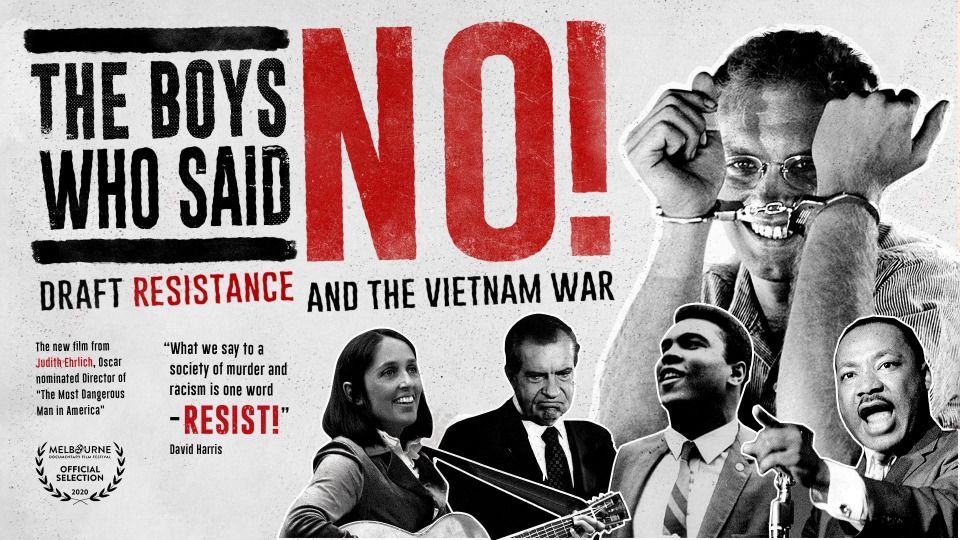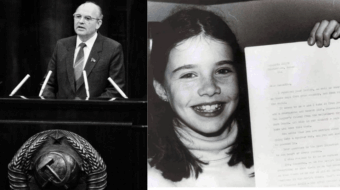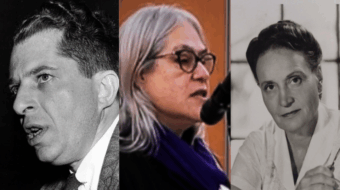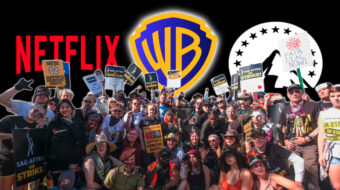
A highly effective and moving new documentary about the young American men who refused to be sucked into the maw of the Selective Service System during the Vietnam War has just appeared. The Boys Who Said No!: Draft Resistance and the Vietnam War is featured in the Socially Relevant Film Festival online and is available for free viewing now but only until March 21 at 8:59 p.m. (I assume that’s in whatever time zone you’re in, but to be on the safe side, I advise you not to wait that long!)
Oscar-nominated filmmaker Judith Ehrlich directs this story of a growing mass movement of war resisters who choose conscience (and their own lives!) over killing peasants halfway around the globe who never did them any harm. By attempting to halt the war machine—and not only to save their own skins—they were also hoping to spare any other American death, danger and disability, and to allow the peoples of the former French Indo-China in today’s Vietnam, Laos and Cambodia, the freedom to determine their own national destinies.
Even without having developed, in many cases, a sophisticated analysis of U.S. global interests and the way the U.S. sought to take over from the dying French and British empires, these resisters implicitly recognized an imperialist war when they saw one.
At first, the movement was small and isolated. The filmmakers take pains to associate it with the conscience acquired in the Civil Rights movement. Throughout, they make the connection between the deprivation of human and voting rights in the U.S. and the moral and political stances activists Black and white people assumed once the Vietnam War started heating up, especially after Lyndon B. Johnson became president in late 1963.
Among those whose voices are heard here are the Rev. Martin Luther King, Jr., who was not the first to make public his understanding of the linkages between the domestic and the global struggles. In fact, his story is part of the larger one the film develops, showing how slow and gradual, how depressingly incremental was the growing support for the Resistance. MLK visits Joan Baez in Santa Rita Prison and ties the racial justice and peace movements in an impassioned speech. It is this phase of King’s activism, as well as his support for the labor movement, that is generally left out of the sanitized picture of the saintly preacher who talked about the long arc of justice.
The film chronicles a youth-led movement of draft resisters who ended the draft and helped end the brutal war. These events, taking place in the latter half of the 1960s and into the early 1970s, are practically ancient history now for most of the world’s population that is, after all, under the age of 60 and has no active memory of the period.
Viewers will be introduced to a host of prominent individuals who stood with the draft resisters, such as Dr. Benjamin Spock, Stokely Carmichael, Daniel Ellsberg, Father Dan Berrigan, as well as a roster of resisters themselves, now in their 70s. If there is one featured resister in the film, that would have to be David Harris, who wound up getting sentenced to three years in federal prison (he served 20 months). Remarkable film footage survives of many of his speeches, which not only attracted thousands to join him in resisting the draft, but also impressed folksinger Joan Baez. The two married, and had a son together, though life together after prison did not work out successfully and they separated. Film footage includes secretly recorded scenes inside federal prisons.
Another resister who graces the film off and on is boxer Muhammad Ali. The face of the anti-war and anti-draft movement has come down to the present day as Caucasian, as if it were only privileged white college students who got “woke” to the peril that faced then. But this was not the case at the time, and the documentary establishes the larger truth that many young Black men and their families also burned or tore up their draft cards, or later on, as the SSS started collapsing administratively, just stopped showing up at pre-induction physicals, as other young men also did.
Interviewees recall the militant public actions they took to oppose the war and refuse any part in it. These were not, as they were called, “draft dodgers,” and they did not pay off doctors to find phony disqualifying “bone spurs.” They were beaten mercilessly as they sat in, blocked induction entrances, leafletted the young men entering, marched and sang. They demonstrated a courage to defend human rights, including their own, that was fully the equal of others who were drafted and sent overseas to fight. They knew they would be physically harmed, arrested, tried, sent to prison, and subjected to possibly years of punishment and long retribution for their conscience, yet stayed the course and took the risks. An estimated 570,000 men resisted the draft in one form or another.
Other Americans, not susceptible to the draft themselves, supported the anti-war movement in a myriad of ways, some quite dramatic, such as raiding SSS offices and destroying files. In time, some college chaplains and ministers of religion came to see the immortality of the war and joined the movement. Women played an important role as family members, draft counselors, people who helped run anti-war coffeehouses and attended trials, as well as demonstrated.
The crafty Richard Nixon makes a number of appearances in the film. Those of short memory may not recall that in 1968 he actually ran as a peace candidate! We are reminded here of the long, slow slog toward the final dénouement as he gradually withdrew some American troops and turned Vietnam into more of an air war. Eventually, under Nixon, the draft was abolished in 1973.
That was not the only success of the anti-war movement. Though the war proceeded mercilessly, at various points it could easily have gotten much worse, but the growing disaffection with it prevented further and more brutal escalation. After 1968, a majority of American public opinion had turned against the war. If the U.S. government in the end wound the war down—in 1973 turning it over almost entirely to South Vietnamese puppet forces—it’s not because anyone in the White House had concluded it was wrong, but only unwinnable. Any further escalation, such as the 1970 invasion of Cambodia, would only result in the further disheveling of the American social fabric.
Let it never be claimed that the anti-war movement did no good. Over time, the courts started listening to the resisters, taken by the depth of their sincerity, willing, as they were, to go to jail rather than compromise their souls. Up to 90% of those indicted were not convicted.
Ideologically, The Boys Who Said No! takes a strong nonviolent position. Acts of violence and destruction did take place on the part of some who after years and years became frustrated with the continuing progress of the war, but the futility of it became apparent. The way to win over the great masses of the American people simply had to be nonviolent in the spirit of Gandhi, Dr. King, Joan Baez, and other leaders. Columbia University student activist Mark Rudd, who later spent years in the Weather Underground, makes a brief appearance here, reflecting on how “gullible” and out of touch he was at the time.
As one who was personally active in the anti-draft, anti-war movement at that time (and did a little jail time myself), I noticed some things rather pointedly left out. In the filmmaker’s zeal to remind viewers of the Civil Rights inspiration to the first wave of anti-war protesters, she brings in a number of references to the Southern Nonviolent Coordinating Committee (SNCC). I have no problem with that, and it was a positive contribution. But on the big college campuses where the movement really took off, the main organizing was led by Students for a Democratic Society (SDS), which goes unmentioned.
This is not the place to recount my own experience, but I have done so in an essay, “My SDS Activist Years in New Orleans” in You Say You Want a Revolution: SDS, PL, and Adventures in Building a Worker-Student Alliance (San Francisco: 1741 Press, 2019). It felt a little weird to see myself and the entire organization I thought was so critical to the anti-war movement submerged in the turbulent stream of history, but I guess it’s time to start getting used to the feeling of erasure! Or was this part of the “cancel culture?”
Also slighted are the investigative trips made to Hanoi under wartime conditions by American peace activists (Jane Fonda is still remembered not so fondly in many super-patriotic quarters, but there were others as well, including Herbert Aptheker from the CPUSA with Tom Hayden and Staughton Lynd). Another response from the young men subjected to the draft was to emigrate—to Canada, Scandinavia or other places—some of them permanently.
Left out, too, was Jimmy Carter’s amnesty. On the first full day of his presidency, Jan. 21, 1977, Carter granted unconditional pardons to the hundreds of thousands who had evaded the draft, either by leaving the country or by refusing to cooperate with SSS. The best-known American to serve in Vietnam and then turn against the war upon his return was, of course, John Kerry, but he does not appear in the film either.
These are in the end small observations and not meant to detract from the necessity of this film now while so many of the principals in the movement are still with us. The ending is beautiful, tying the spirit of resistance which had become so internalized in us to the movements of today.
To see the film go here. Remember: Only until March 21 at 8:59 p.m. The trailer can be seen at that same site.










